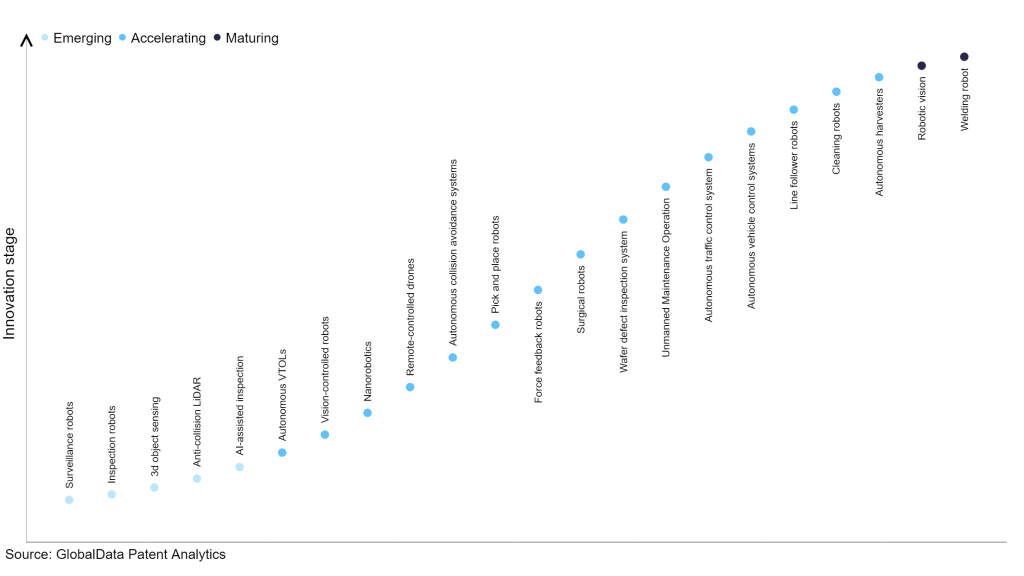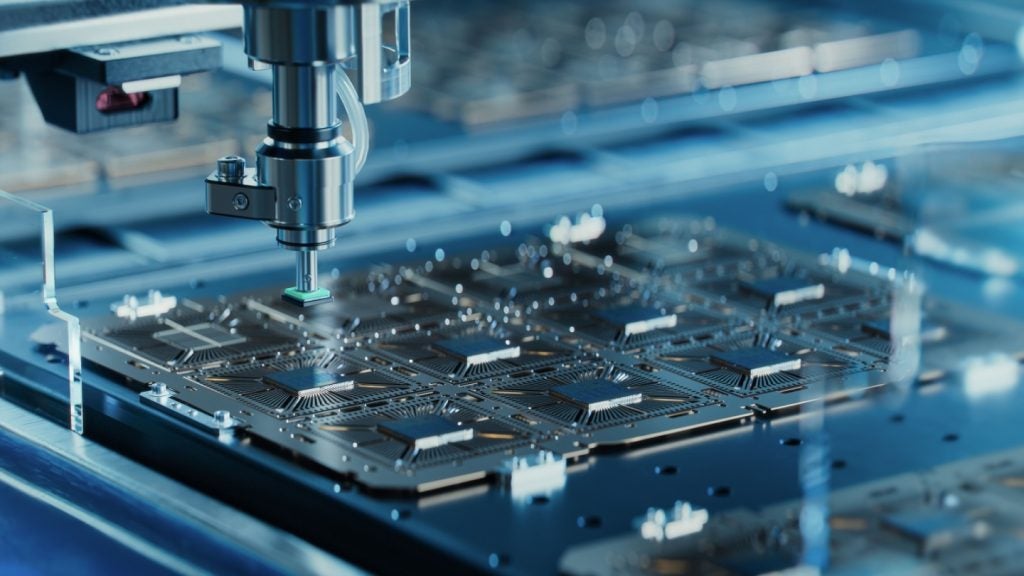The technology sector remains a hub of innovation, with activity driven by the progress in robotics, machine learning, artificial intelligence (AI) and sensor technologies, and growing importance of technologies such as optical inspection, electron beam inspection, X-ray inspection, and infrared (IR) inspection. These technologies work together to enable the accurate and efficient detection, classification, and analysis of defects on semiconductor wafers. In the last three years alone, there have been over 3.6 million patents filed and granted in the technology industry, according to GlobalData’s report on Innovation in Robotics: Wafer defect inspection system. Buy the report here.
However, not all innovations are equal and nor do they follow a constant upward trend. Instead, their evolution takes the form of an S-shaped curve that reflects their typical lifecycle from early emergence to accelerating adoption, before finally stabilising and reaching maturity.
Identifying where a particular innovation is on this journey, especially those that are in the emerging and accelerating stages, is essential for understanding their current level of adoption and the likely future trajectory and impact they will have.
300+ innovations will shape the technology industry
According to GlobalData’s Technology Foresights, which plots the S-curve for the technology industry using innovation intensity models built on over 2.5 million patents, there are 300+ innovation areas that will shape the future of the industry.
Within the emerging innovation stage, AI-assisted inspection, anti-collision LiDAR, and 3D object sensing are disruptive technologies that are in the early stages of application and should be tracked closely. Autonomous harvesters, cleaning robots, and line follower robots are some of the accelerating innovation areas, where adoption has been steadily increasing. Among maturing innovation areas are, welding robot and robotic vision, which are now well established in the industry.
Innovation S-curve for robotics in the technology industry

Wafer defect inspection system is a key innovation area in robotics
A wafer defect inspection system is an automated system that utilises optical inspection technology to identify and categorise defects on semiconductor wafers. It can detect various types of defects, including particle contamination, surface damage, scratches, and pinholes. By providing a detailed analysis of the wafer's surface, this system enables manufacturers to swiftly identify and address process issues that could potentially result in expensive product failures.
GlobalData’s analysis also uncovers the companies at the forefront of each innovation area and assesses the potential reach and impact of their patenting activity across different applications and geographies. According to GlobalData, there are 40+ companies, spanning technology vendors, established technology companies, and up-and-coming start-ups engaged in the development and application of wafer defect inspection system.
Key players in wafer defect inspection system – a disruptive innovation in the technology industry
‘Application diversity’ measures the number of different applications identified for each relevant patent and broadly splits companies into either ‘niche’ or ‘diversified’ innovators.
‘Geographic reach’ refers to the number of different countries each relevant patent is registered in and reflects the breadth of geographic application intended, ranging from ‘global’ to ‘local’.
Patent volumes related to wafer defect inspection system
Source: GlobalData Patent Analytics
KLA is one of the leading patent filers in wafer defect inspection system. The company’s patents are aimed at methods and systems for determining characteristics of patterns of interest (POIs).
One system is configured to acquire output of an inspection system generated at the POI instances without detecting defects at the POI instances. The output is then used to generate a selection of the POI instances. The system then acquires output from an output acquisition subsystem for the selected POI instances. The system also determines characteristics of the POI using the output acquired from the output acquisition subsystem.
Other prominent patent filers in the space include Toshiba and Hitachi.
By geographic reach, Fogale Nanotech leads the pack, followed by Peter Rose and DAIHEN. In terms of application diversity, Kulicke & Soffa Industries holds the top position, followed by Fogale Nanotech and Rambus.
Wafer defect inspection system have the ability to enhance product quality, optimise manufacturing processes, reduce costs, and improve customer satisfaction. It supports continuous improvement initiatives and drives technological advancement in the semiconductor industry, contributing to the overall growth and success of semiconductor manufacturers.
To further understand how robotics is disrupting the technology industry, access GlobalData’s latest thematic research report on Robotics – Thematic Research Report.
Premium Insights
From

The gold standard of business intelligence.
Blending expert knowledge with cutting-edge technology, GlobalData’s unrivalled proprietary data will enable you to decode what’s happening in your market. You can make better informed decisions and gain a future-proof advantage over your competitors.






